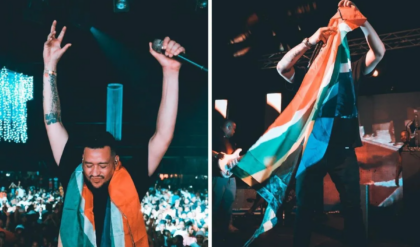
WNBA players are voicing their frustration after Caitlin Clark lands a record-breaking contract in Europe, sparking intense debate about pay disparities and the impact on women’s basketball.
This unprecedented deal has sent shockwaves through the league, leaving many to question its long-term effects.
Caitlin Clark’s decision to accept a lucrative contract in Europe has ignited significant discussions among WNBA players regarding pay disparities and recognition.
Many players are expressing frustration, feeling that Clark’s success diminishes their own achievements and underscores internal tensions within the league.
As the WNBA grapples with the implications of her potential move abroad, concerns grow about its ability to support top talent in an increasingly competitive landscape.
Clark’s transition to Europe not only highlights her exceptional talent but also raises pressing questions about the treatment of rising stars within the WNBA.
Some players believe their experience and contributions warrant greater recognition and financial rewards.
The contrasting support Clark receives abroad compared to her own teammates emphasizes a troubling lack of solidarity in the WNBA, where instances of mockery and rivalry have emerged.
This situation sheds light on deeper disparities in recognition and opportunity within women’s basketball.
The emotional responses from established players like A’ja Wilson reflect broader concerns about equity and fairness.
As Clark garners international acclaim, the struggles of long-standing WNBA stars become more pronounced, revealing an urgent need for a more equitable approach to recognizing talent.
The dynamics of race and media visibility play a crucial role in this discourse.
Clark’s rapid rise raises questions about how these factors affect the opportunities and rewards for players of different backgrounds.
The media’s tendency to promote certain athletes over others creates disparities in visibility, further complicating the landscape for black athletes in the WNBA.
The ongoing tensions between Clark and other players, particularly DJ Carrington, exemplify the personal frustrations stemming from these inequities.
Such rivalries reflect the systemic issues within the league that need addressing.
Caitlin’s experience also highlights a concerning lack of support from her teammates and organization.
The competitive atmosphere, characterized by internal conflicts and professional envy, detracts from the collective goal of promoting women’s basketball.
The Indiana Fever’s silence during her challenging times points to a deeper cultural issue within the team.
As Clark contemplates her future in Europe, the situation underscores a larger crisis within the WNBA regarding player treatment and support.
If top talent continues to seek opportunities abroad for better contracts and working conditions, the league’s future growth could be at risk.
Clark’s presence has been pivotal for increasing visibility and fan engagement, and her absence has already shown a negative impact on attendance and interest in the league.
The potential departure of key players like Clark could signal to others that more favorable opportunities exist outside the WNBA.
Retaining top talent is essential for the league’s long-term success and growth.
As these discussions unfold, the WNBA stands at a critical juncture, needing to address disparities in recognition, compensation, and support to foster a healthier and more inclusive environment for all players.





